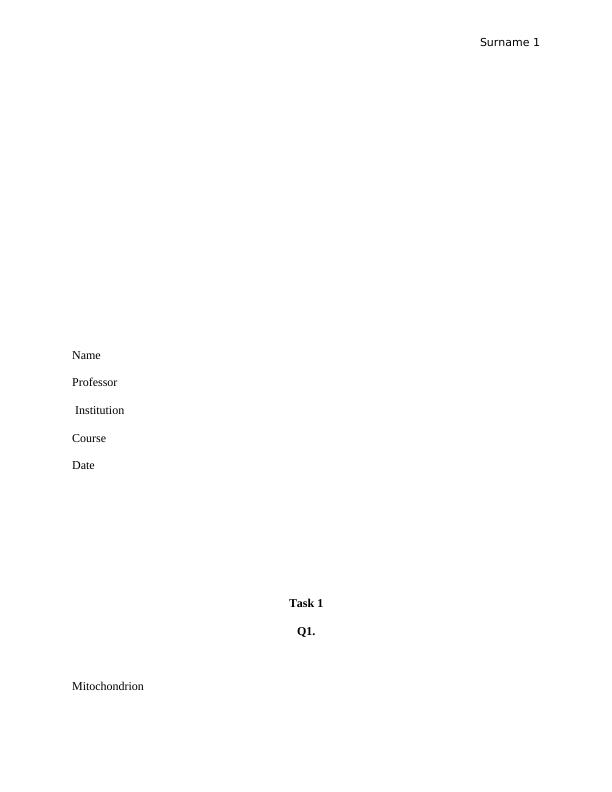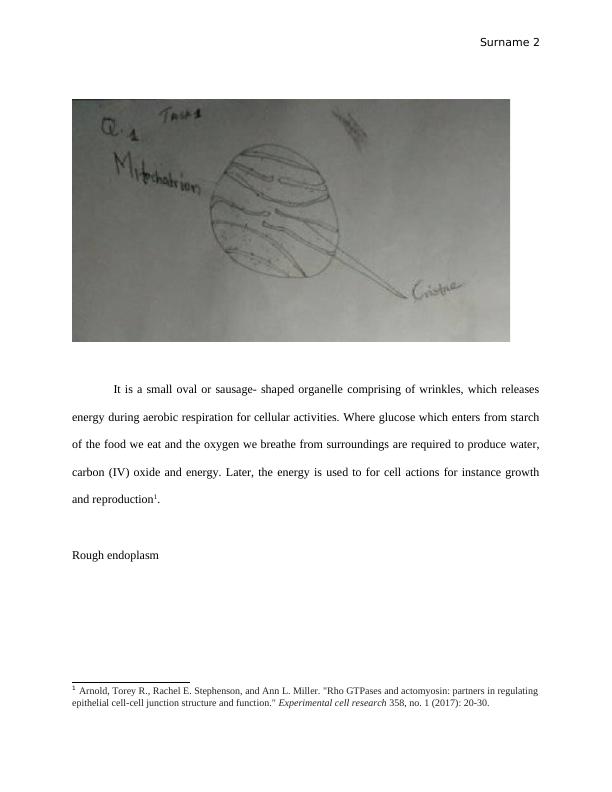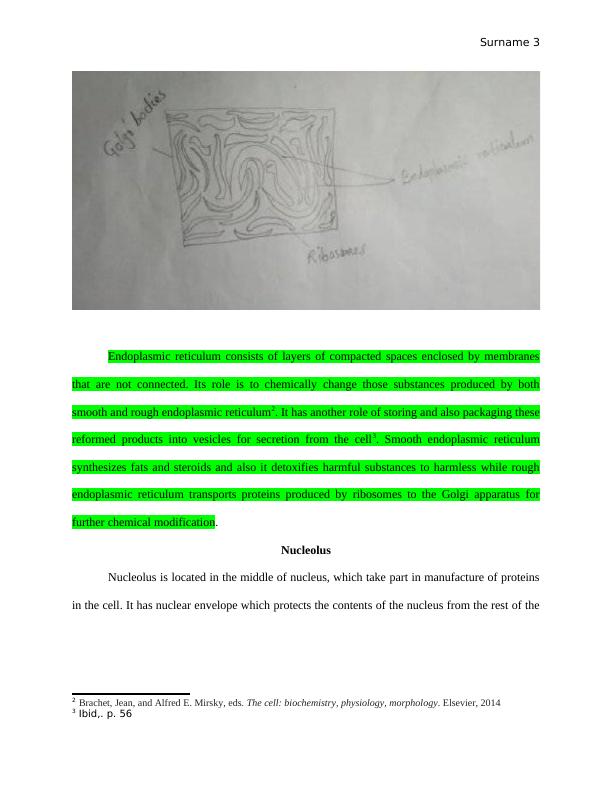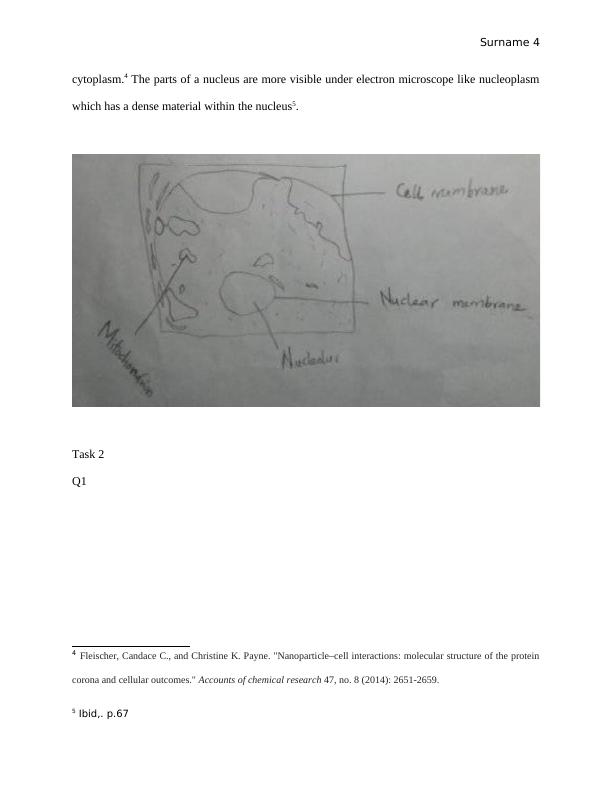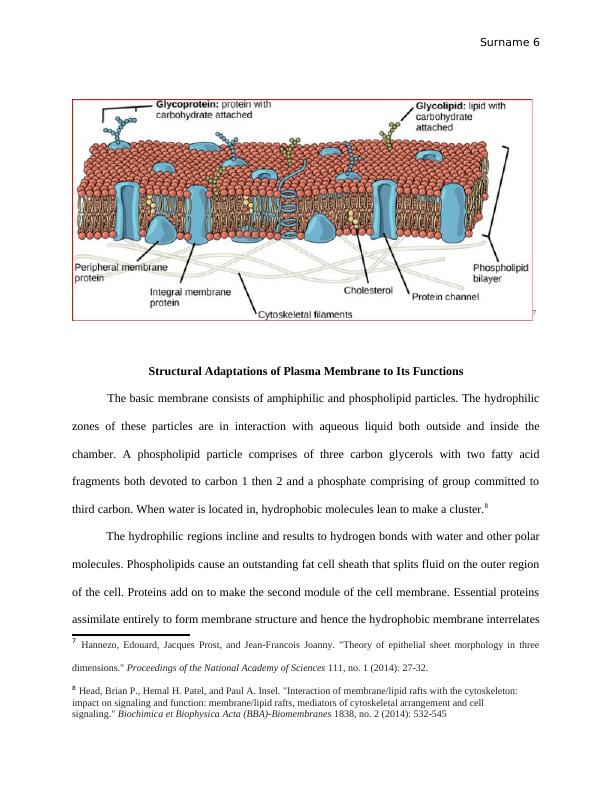Surname 18. Name. Professor. Institution. Course. Date.
This assignment involves completing a table on the structure and function of cell organelles, drawing and labeling cell plasma membranes, comparing different paths substances can take across the plasma membrane, understanding mitosis and meiosis, and drawing different tissue types and answering questions on cell specialization.
Added on 2022-10-17
Surname 18. Name. Professor. Institution. Course. Date.
This assignment involves completing a table on the structure and function of cell organelles, drawing and labeling cell plasma membranes, comparing different paths substances can take across the plasma membrane, understanding mitosis and meiosis, and drawing different tissue types and answering questions on cell specialization.
Added on 2022-10-17
End of preview
Want to access all the pages? Upload your documents or become a member.

